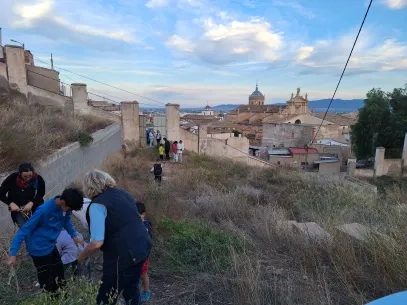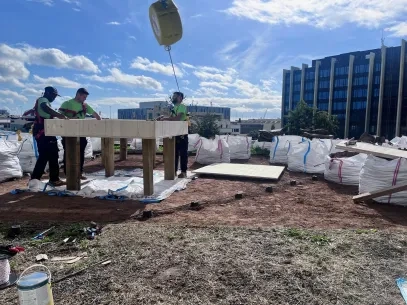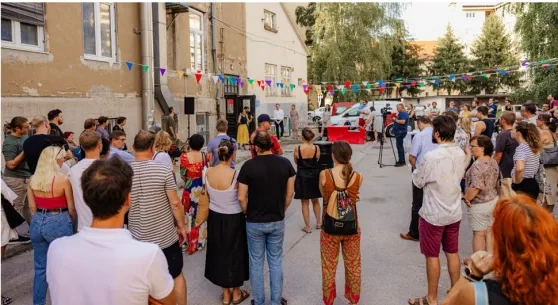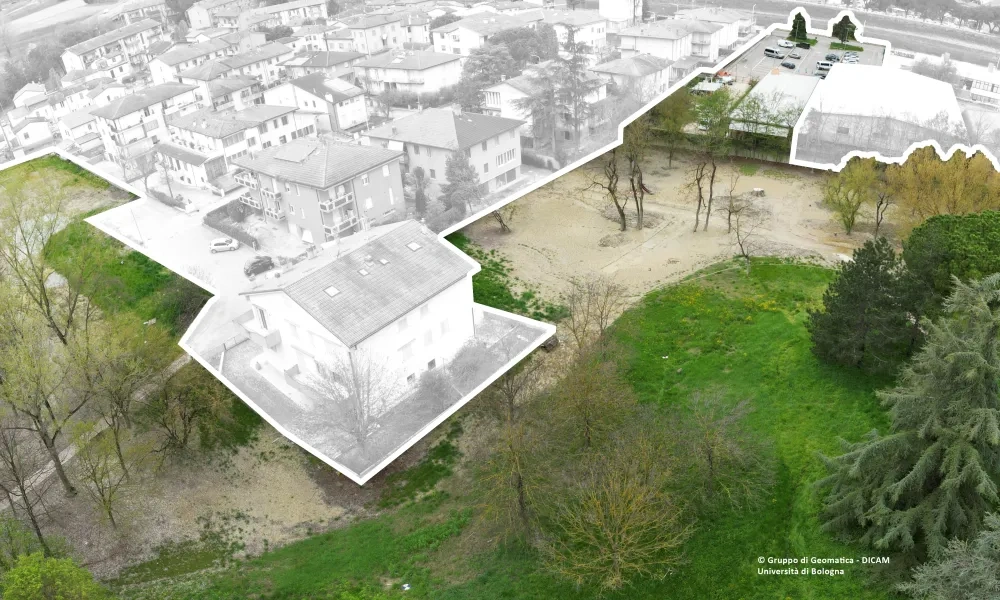
The fact that the effects of climate change have become part of daily life is now widely acknowledged and confirmed by many Italians. From torrid days when life outdoors becomes nearly impossible to prolonged and unsettling droughts, habits and activities across these territories are adjusting to new records set by shifting climate trends. Yet when these effects reach the doorstep, bringing mud and damage more than once within a couple of years, they leave a mark that many residents of Romagna will not easily forget. Few climate impacts are as immediate and destructive as those caused by large volumes of water that overwhelm and flood entire areas, disregarding everything in their path. How can we prepare? How can we adapt our territories? How can we manage water as a vital resource rather than a widespread source of risk?
The IA AQUAGREEN project addresses these questions in the aftermath of yet another flood, moving from emergency-driven interventions toward systemic solutions to increase urban systems' resilience. Stormwater management methods will be tested, monitored and evaluated. Early warning systems and decision-support tools will be developed. Citizens will be actively involved in the management of multifunctional green spaces.
Managing every drop
There is an expression used to describe when a small contribution, seemingly insignificant on its own, adds up with others to exceed the capacity of a system. In English, this is often expressed as the straw that broke the camel’s back. Every language has its own figurative image for the same idea. In Italian, it is described as “la goccia che fa traboccare il vaso”, meaning the single drop which, falling into a container already filled with countless others, is the one that causes it to spill over.
If we extend this image to the torrential rains that are becoming increasingly frequent in the current climate emergency, we understand how the management of each drop can contribute to the resilience of our territories. With the increase in intense rainfall events, the likelihood grows that the capacity of our drainage systems will be exceeded and that from a certain drop onward, all the following ones will overflow. Once this water escapes the drainage infrastructure, it floods, disrupts, and damages everything in its path.
It is therefore essential not only to repair and expand the drainage system to increase its efficiency and capacity, but also to intercept every drop that falls on the territory before it collectively reaches rivers and exceeds their thresholds. AQUAGREEN is a project centred on managing every drop falling on a pilot area in Faenza. It aims to ensure that each drop is intercepted, directed, stored, reused, and used as close as possible to where it lands. The project seeks to develop innovative systems for urban areas, so that water management becomes part of the everyday urban environment and every space contributes to better rainfall management.
A fragile territory
A simple rule helps us understand why rainfall patterns today are different from the past: the warmer the atmosphere, the more water vapour it can hold. For every additional degree of temperature, it is estimated that the air can retain about 7 per cent more humidity. Considering that the global average temperature has already increased by approximately 1.4°C compared to pre-industrial levels, the atmosphere now contains at least that 7 per cent more moisture than it did a century ago, as meteorologist Luca Mercalli points out. And all this water, sooner or later, has to fall. The question is how and where it does so.
Rainfall does not increase uniformly. It may rain very little in some areas and then fall in large volumes over a short period in a limited area. This is precisely what happened in Romagna. In May 2023, the region was struck by two flood events just two weeks apart, on the 3rd and the 16th of the month. Torrential rain, overflowing rivers, and entire areas inundated. An exceptional event repeated in September 2024, when a further extreme weather event brought even greater rainfall than in 2023, leaving little time for recovery or securing the territory.
These are not isolated episodes. They are part of a wider trend indicating an acceleration of extreme phenomena, driven by a increasingly warm and unstable climate. Romagna has, unfortunately, become one of the most recognisable cases of this trend.
The Romagna Faentina Union of Municipalities is located in the province of Ravenna, encompassing the territories of Faenza, Brisighella, Casola Valsenio, Castel Bolognese, Solarolo and Riolo Terme. It is an area lying across the hills and the plains, where fast-flowing rivers encounter densely urbanised areas with an artificial water regulation system. The combination of these factors means that during intense rainfall events, large volumes of surface runoff reach the plain’s river and canal systems in a very short time.
Faenza, for example, is crossed by the Lamone River, which just upstream from the city receives the waters of the Marzeno, a tributary with a torrential regime and heavily regulated course. It is not unusual for the Lamone to exceed alert levels, leaving many neighbourhoods in suspense as they await the flood peak to pass. However, climate change in this area also means higher summer temperatures and greater precipitation variability, which sometimes results in prolonged drought periods during which water resources become precious.
Image
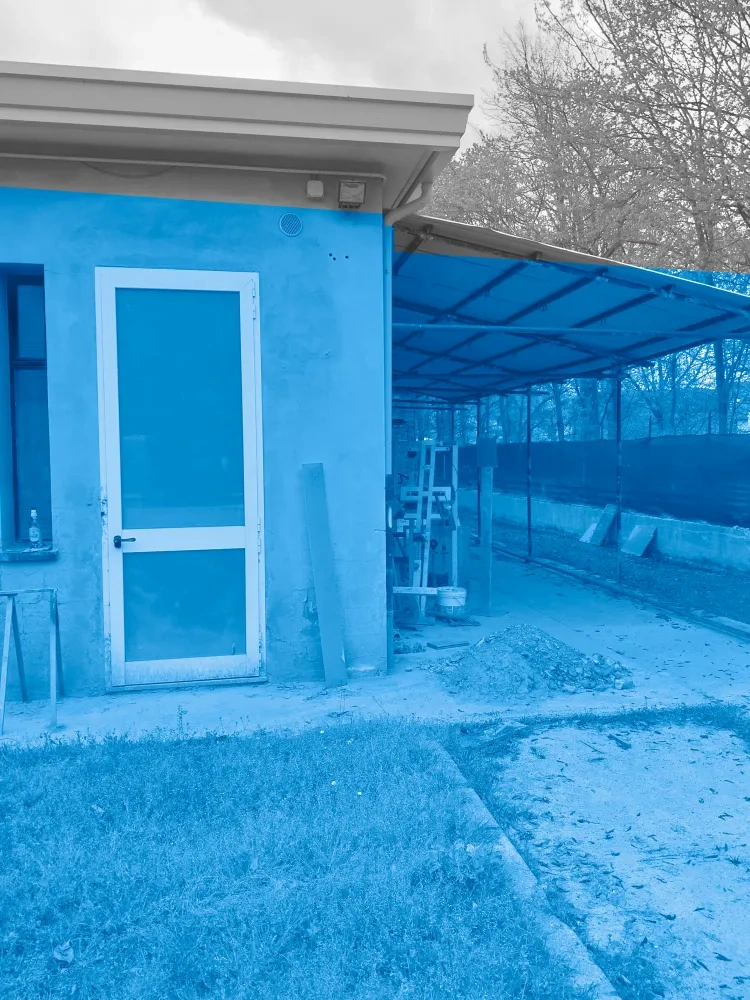
The level of water reached in the recent flooding within Borgo Durbecco

From emergency to transformative solutions
For a territory struck by a flood like those that hit Romagna, many approaches contribute to reducing risk and limiting damage. Experts often speak of a "risk management cycle," because it’s not just about reacting to the emergency: it’s also about preparing in advance, responding effectively during the crisis, and taking wise action afterwards to reduce the impact of future events.
The first and most visible line of defence consists of infrastructures: levees, flood retention basins, dams, and spillways. These are designed to contain or divert excess water, protecting cities, farmland, and homes. However, updating and maintaining such structures takes time, which is something that is increasingly scarce, as extreme events become more frequent and intense.
Just before and during an emergency, rapid and operational responses are activated, including mobile barriers and pumps, along with organisational measures such as weather alert systems, evacuation plans, and coordination among civil protection agencies, municipalities, and volunteers.
After a flood, the emergency phase continues with structural restoration work on roads, bridges, and embankments, as well as economic compensation tools like reconstruction funds, aid for families and businesses, and climate damage insurance.
The AQUAGREEN project operates in the delicate phase where the emergency is coming to an end, and, as things get back to normal, we also need to change the old way of thinking that led to the crisis, so we can deal with future climate events and restore people's trust. The project does this by testing new technical, social, and decision-making tools for integrated stormwater management, an approach that combines engineering, urban planning, ecology, and citizen participation. It aims to transform cities into more resilient systems, addressing the challenges of both water excess and scarcity and the rising temperatures brought by climate change.
Image
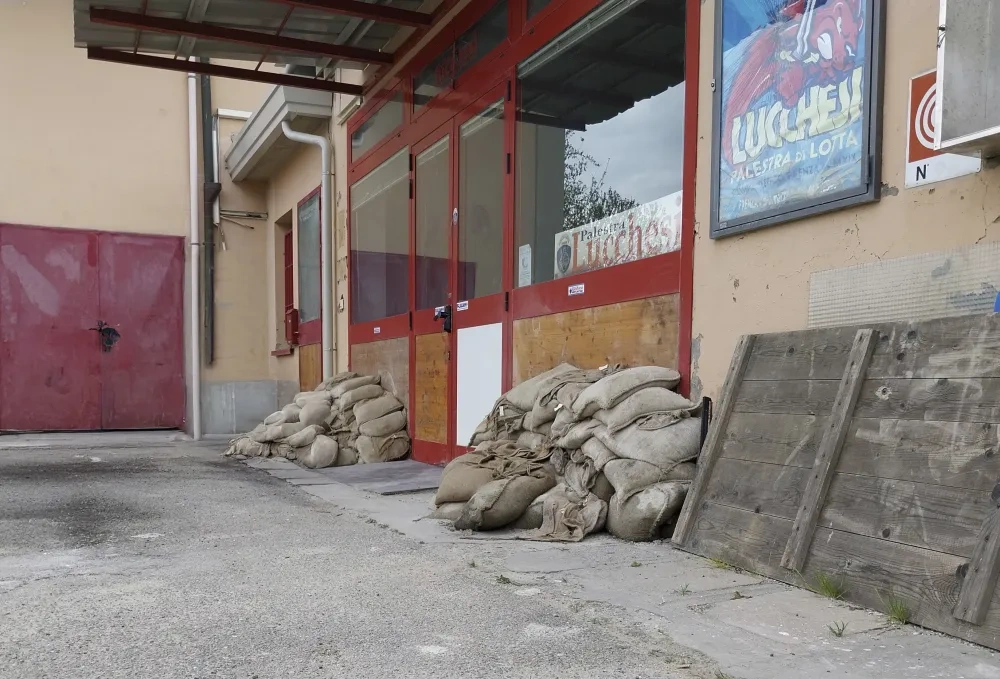
Temporary flood protection measures left since the last emergency

About this resource
The European Urban Initiative is an essential tool of the urban dimension of Cohesion Policy for the 2021-2027 programming period. The initiative established by the European Union supports cities of all sizes, to build their capacity and knowledge, to support innovation and develop transferable and scalable innovative solutions to urban challenges of EU relevance.
Similar content
